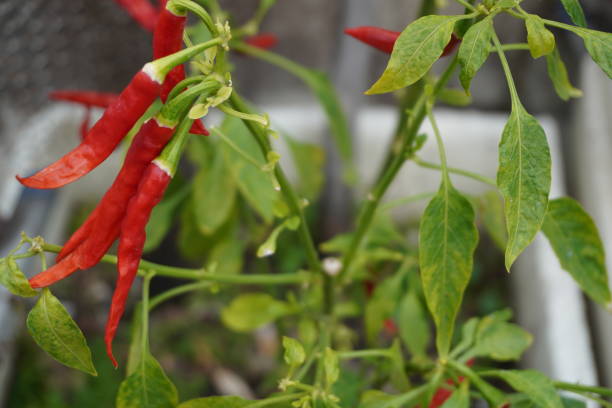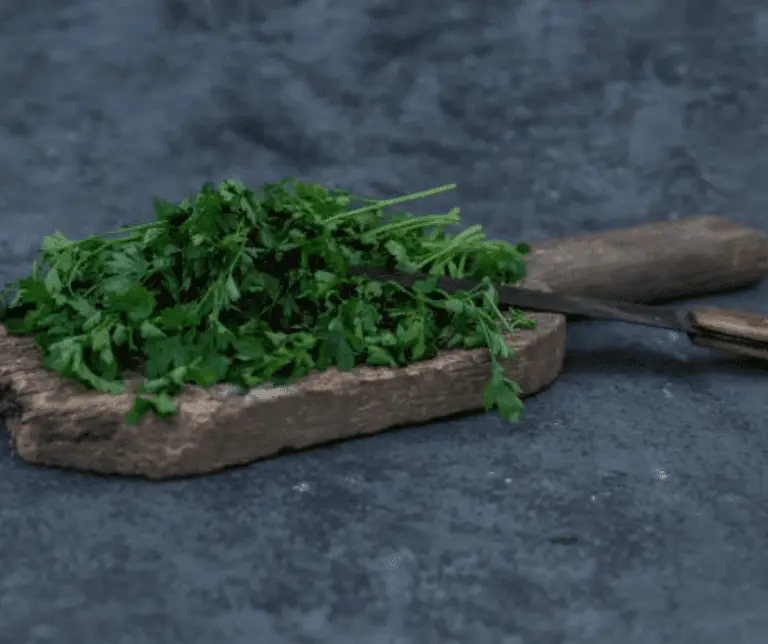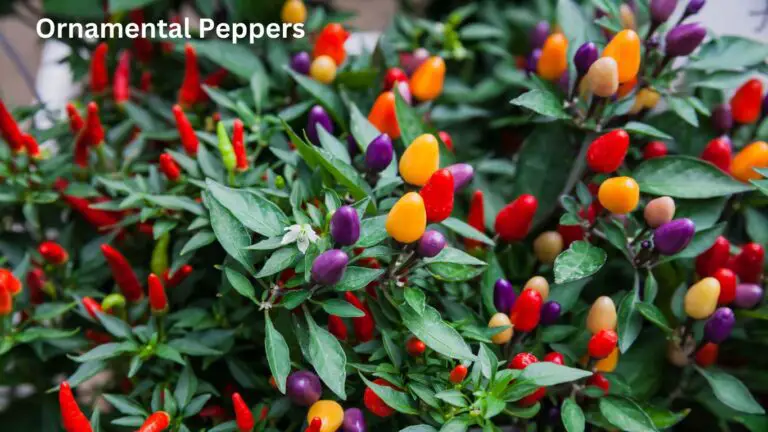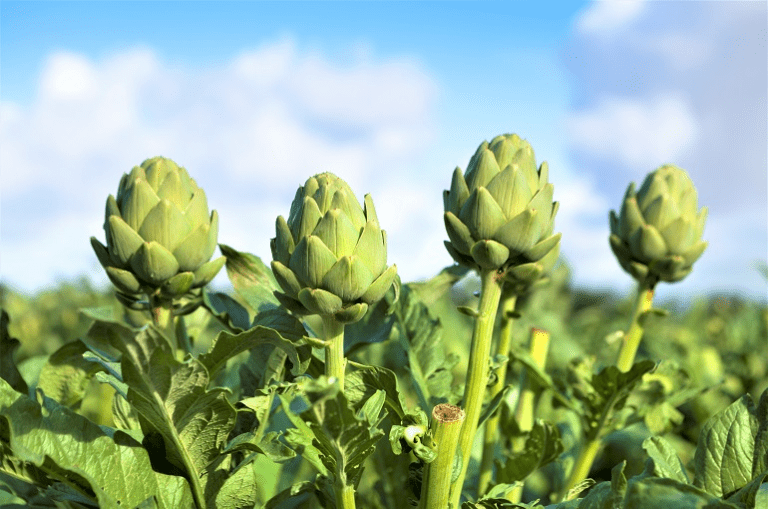Growing Savory: The Herb for All Seasons
Table of Contents
Potential Health Benefits of Savory
Savory, a popular herb in the mint family, not only adds a delightful flavor to dishes but also offers several potential health benefits. Rich in antioxidants, savory has been found to help protect cells from damage caused by free radicals, potentially reducing the risk of chronic diseases. Additionally, savory contains compounds that may have anti-inflammatory properties, which could help in reducing inflammation in the body.
Moreover, some studies suggest that savory could aid in digestion by promoting the production of digestive enzymes, thus supporting gut health. Its antimicrobial properties may also help in fighting off harmful bacteria, contributing to overall well-being. Including savory in your diet may not only enhance the taste of your meals but also provide a nutritional boost with its potential health-promoting properties.
Different Varieties of Savory
Savory, a versatile herb beloved for its aromatic and flavorful leaves, comes in two main varieties: summer savory (Satureja hortensis) and winter savory (Satureja montana). Summer savory, known for its delicate and sweet taste, is an annual herb that thrives in warm weather conditions. Its leaves are commonly used in culinary dishes to add a peppery, slightly minty flavor. On the other hand, winter savory, a perennial herb with a more pungent and robust taste, is well-suited for colder climates and can survive frost.
While both summer and winter savory varieties belong to the mint family Lamiaceae, they differ in terms of flavor profiles, growth habits, and preferred growing conditions. Gardeners and culinary enthusiasts often appreciate the distinct characteristics of each variety and utilize them in various dishes to enhance taste and aroma. Whether you prefer the subtle sweetness of summer savory or the boldness of winter savory, incorporating these herbs into your garden or kitchen can elevate the overall culinary experience with their unique flavors and fragrances.

Best Growing Conditions for Savory
Savory, a popular herb known for its aromatic leaves and versatile culinary uses, thrives best in specific growing conditions that mimic its natural habitat. To successfully cultivate savory, it is essential to provide adequate sunlight, as this herb requires at least six to eight hours of direct sunlight daily to flourish. Additionally, savory thrives in well-draining soil with a slightly alkaline pH level between 6.7 and 7.3.
Furthermore, ensuring proper air circulation around the plants is crucial in preventing diseases and promoting healthy growth. Savory also benefits from regular watering, but it is essential to avoid overwatering, as this can lead to root rot. By meeting these basic growing conditions, gardeners can cultivate healthy and flavorful savory plants to enhance their culinary creations.
How to Harvest Savory
When it comes to harvesting savory, timing is crucial to ensure maximum flavor and aroma. The optimal time to harvest savory is before the plant starts to flower, typically in the morning when the essential oils are at their peak concentration. Gently snip off the top 1/3 of the plant using sharp scissors or pruning shears to encourage new growth and maintain the plant’s compact shape.
After harvesting, it’s essential to dry the savory properly to preserve its flavor for future use. One common method is to tie the stems together in small bundles and hang them upside down in a cool, dark, and well-ventilated area. Alternatively, you can use a dehydrator set to a low temperature or spread the leaves on a baking sheet and dry them in the oven. Once the savory is completely dry, remove the leaves from the stems and store them in an airtight container away from sunlight to maintain their freshness.
Creative Culinary Uses for Savory
Savory, with its robust and peppery flavor, is a versatile herb that can elevate a wide array of dishes. One of the creative culinary uses for savory is in herb-infused oils and vinegars. Simply add fresh savory leaves to olive oil or vinegar and let the flavors meld together for a few weeks. The result is a deliciously aromatic condiment that can be drizzled over salads, roasted vegetables, or grilled meats for an extra punch of flavor.
Another innovative way to incorporate savory into your cooking is by making savory compound butter. Mix finely chopped savory leaves into softened butter along with other herbs like thyme or parsley, and a pinch of salt. Roll the flavored butter into a log using wax paper and chill it until firm. This savory butter can then be sliced and used to top steaks, seafood, or roasted potatoes, adding a burst of savory goodness to every bite.
| Culinary Use | Description |
|---|---|
| Seasoning Meats and Vegetables | Savory adds depth and flavor to meats, vegetables, and stews. It pairs well with poultry and eggs. |
| Enhancing Soups and Sauces | Savory’s unique flavor profile makes it an excellent addition to soups, sauces, and marinades. |
| Baking and Breads | Try incorporating savory into savory breads, biscuits, or scones for a delightful twist. |
| Herb Blends and Infusions | Combine savory with other herbs like thyme, rosemary, or oregano for flavorful blends. |
| Savory Ice Cream or Sorbet | Yes, you read that right! Savory can be used to create intriguing frozen desserts. |
Savory in Traditional Medicine
Savory has a long history of use in traditional medicine across various cultures for its potential therapeutic properties. The herb is believed to possess antimicrobial, anti-inflammatory, and antioxidant properties, making it a popular choice for treating a range of ailments. In traditional medicine, savory is often used to help alleviate digestive issues, respiratory conditions, and even promote overall wellness.
Additionally, savory is known for its carminative properties, which can aid in reducing bloating and relieving gas. It is also suggested to have mild diuretic effects, possibly helping in promoting urinary health. Through its aromatic compounds and essential oils, savory is thought to have a positive impact on gut health and digestion. With its rich history in traditional medicine, savory continues to be valued for its potential health benefits in various cultures around the world.
Companion Plants for Savory
Companion planting is a strategic gardening technique that involves planting different species of plants near each other to mutually benefit from their presence. When it comes to savory, there are several companion plants that can enhance its growth and repel pests naturally. One excellent companion plant for savory is thyme. Both savory and thyme have similar growing conditions and complement each other well. Thyme’s aromatic properties help deter pests that could potentially harm savory, making it a valuable ally in the garden.
Another suitable companion plant for savory is lavender. Lavender and savory share the ability to attract pollinators, such as bees and butterflies, which can help improve overall garden health. Additionally, lavender’s strong scent acts as a natural insect repellent, keeping destructive pests away from the savory plant. Planting lavender alongside savory not only adds aesthetic appeal to the garden but also contributes to a harmonious and beneficial growing environment for both plants.
Preserving Savory for Year-Round Use
Preserving savory for year-round use is a great way to ensure that you have access to the fresh, aromatic herb even when it’s not in season. One popular method for preserving savory is drying it. To do this, simply harvest the savory herbs, tie them into small bundles, and hang them upside down in a warm, well-ventilated area. Once the herbs are completely dried, remove the leaves from the stems and store them in an airtight container in a cool, dark place. Dried savory can retain its flavor for up to six months, making it a convenient option for year-round culinary use.
Another effective way to preserve savory is by freezing it. This method helps to lock in the herb’s flavors and nutrients, ensuring that it stays fresh for an extended period. To freeze savory, wash and dry the leaves thoroughly, chop them into desired sizes, and place them in an airtight container or freezer bag. You can also freeze savory in ice cube trays with a bit of water or oil for easy portioning when cooking. Frozen savory can be stored for up to a year, allowing you to enjoy the herb’s distinct taste in your dishes even during the colder months.
Savory in Different Cuisines
Savory, with its rich and robust flavor profile, is a versatile herb that features prominently in various culinary traditions around the world. In Mediterranean cuisine, savory is often used to season meat dishes, vegetable salads, and bean soups, adding a savory depth of flavor that enhances the overall taste experience. The herb’s aromatic qualities also make it a popular choice for infusing oils and vinegars, imparting a distinct savory note to dressings and marinades.
Moving eastward, savory finds its place in Middle Eastern cuisine, where it is a key component in za’atar, a flavorful spice blend that typically includes thyme, sesame seeds, sumac, and salt. This blend is used to season bread, meats, and salads, offering a unique and zesty flavor profile that is both aromatic and tangy. Furthermore, in French cuisine, savory is a staple herb in the traditional herb blend known as “herbes de Provence,” which is used to season a wide range of dishes, from roasted meats to vegetable gratins, adding a touch of the French countryside to every bite.
Tips for Growing Savory Indoors
When growing savory indoors, it is important to provide the herb with the ideal conditions to thrive. Select a location that receives at least 6-8 hours of sunlight per day or use grow lights to supplement natural light. Savory prefers well-draining soil, so ensure your pot has adequate drainage holes to prevent waterlogging, which can lead to root rot. Water the plant when the top inch of soil feels dry to the touch, but be cautious not to overwater as savory prefers slightly drier conditions.
Regular pruning is essential for maintaining a healthy savory plant indoors. Trim the stems regularly to encourage bushier growth and prevent the plant from becoming leggy. Additionally, fertilize the plant every 4-6 weeks with a balanced liquid fertilizer to provide essential nutrients for robust growth. Remember to rotate the pot occasionally to ensure even exposure to sunlight, promoting uniform growth and preventing the plant from leaning towards the light source. By following these tips, you can successfully cultivate savory indoors and enjoy its fresh flavors in your culinary creations year-round.
Common Pests and Diseases of Savory
Savory plants are generally resilient; however, they can still fall victim to some common pests and diseases. One frequent nuisance for savory is the spider mite. These tiny arachnids can quickly infest savory plants, causing yellowing, stippling, and in severe cases, webbing. To combat spider mites, consider using neem oil or introducing predatory mites, such as Phytoseiulus persimilis, which feed on spider mites and can help control their population effectively.
Another potential issue for savory is powdery mildew, a fungal disease that manifests as white powdery patches on the plant’s leaves. Powdery mildew thrives in humid conditions and can weaken the savory plant if left unchecked. To prevent powdery mildew, ensure good air circulation around the plants, avoid overhead watering, and consider applying fungicidal sprays containing sulfur or potassium bicarbonate as a preventive measure. Early detection and prompt intervention are crucial in managing these pests and diseases to maintain the health and vigor of your savory plants.
Table
| Pests and Diseases | Description |
|---|---|
| Aphids | Aphids can multiply rapidly and damage growing shoots, causing stunted growth and misshapen plants. |
| Slugs and Snails | These pests create irregularly shaped holes in leaves and stems, and their slime trails are visible. |
| Viral Diseases | Viruses can affect savory plants, leading to various symptoms and reduced overall health. |
Savory as a Natural Insect Repellent
Savory, known for its culinary uses and aromatic properties, also offers a natural solution for repelling insects. The strong scent of savory plants, particularly varieties like summer savory (Satureja hortensis) and winter savory (Satureja montana), acts as a natural deterrent for pests like mosquitoes, flies, and ants in the garden or around your home. By planting savory near vulnerable plants or in outdoor living spaces, you can help ward off unwanted insects without the need for harmful chemical repellents.
In addition to its insect-repelling properties, savory also attracts beneficial insects like bees and butterflies, contributing to a healthier ecosystem in your garden. This dual role of savory as both a repellent for pests and an attractant for pollinators makes it a valuable addition to any garden seeking natural solutions for pest management. Whether planted in pots on a patio or incorporated into flower beds, savory’s versatility and effectiveness make it a must-have plant for those looking to create a more insect-friendly outdoor environment.
Savory in Beauty and Skin Care Products
Savory has gained popularity not only in culinary endeavors but also in the realm of beauty and skincare products. This aromatic herb is known for its potential benefits for the skin, making it a valuable ingredient in various beauty formulations. Savory contains a wealth of antioxidants, essential oils, and beneficial compounds that can help rejuvenate and nourish the skin, offering a natural solution for skincare enthusiasts seeking effective and natural ingredients.
The use of savory in skincare products is attributed to its antimicrobial and anti-inflammatory properties, which can help combat acne, reduce inflammation, and promote overall skin health. The essential oils found in savory have been shown to have a soothing effect on the skin, making it a popular choice for products aimed at calming sensitive or irritated skin. With its array of beneficial properties, incorporating savory into beauty and skincare products can offer a holistic approach to skincare, harnessing the power of nature to enhance skin health and radiance.
Savory in Aromatherapy
Savory essential oil, derived from the aromatic herb Satureja hortensis or Satureja montana, is a valuable addition to aromatherapy practices. Known for its warm, herbaceous scent, savory oil is believed to possess uplifting and invigorating properties, making it a popular choice for promoting mental clarity and emotional well-being. Incorporating a few drops of savory oil into a diffuser or massage oil blend may help enhance focus and foster a sense of alertness.
In addition to its potential cognitive benefits, savory essential oil is also valued for its reputed antimicrobial and antifungal properties. This natural powerhouse is thought to support a healthy immune system and assist in warding off environmental threats. Whether used alone or in combination with other essential oils, such as lavender or eucalyptus, savory oil can be a versatile tool in promoting a clean and balanced atmosphere in both home and professional settings.
Sustainability of Growing Savory
Savory has gained popularity not only for its culinary uses but also for its sustainability in growth. This herb requires minimal water and is known for its ability to thrive in diverse soil conditions. With a high tolerance for heat and resistance to pests and diseases, savory is a resilient plant that can be easily grown without the need for excessive resources or extensive care.
Furthermore, savory is a perennial herb, meaning it can regrow year after year, providing a consistent and sustainable source of flavor and potential health benefits. Its ability to attract beneficial insects also contributes to the overall ecosystem balance in a garden, making it an eco-friendly choice for both amateur and seasoned gardeners looking to cultivate a sustainable and productive herb garden.
FAQ
Is savory easy to grow in a home garden?
Yes, savory is relatively easy to grow in a home garden as long as it receives plenty of sunlight and well-drained soil.
Can savory be used in natural insect repellent products?
Yes, savory is known for its insect-repelling properties and can be used in natural insect repellent products.
What are some traditional medicinal uses of savory?
Savory has been used in traditional medicine to aid digestion, relieve coughs, and soothe sore throats.
Are there any specific companion plants that are beneficial to grow alongside savory?
Some good companion plants for savory include beans, onions, and thyme.
How can savory be incorporated into beauty and skin care products?
Savory can be used in beauty and skin care products for its anti-inflammatory and antibacterial properties.
Can savory be grown sustainably?
Yes, savory can be grown sustainably by using organic farming practices, rotating crops, and conserving water.






